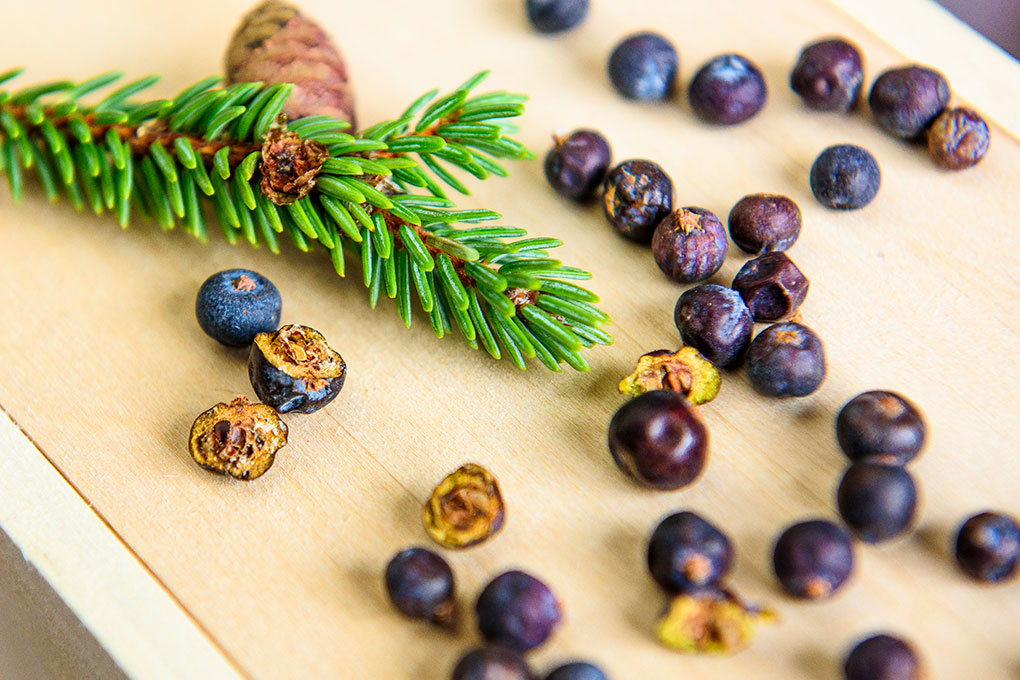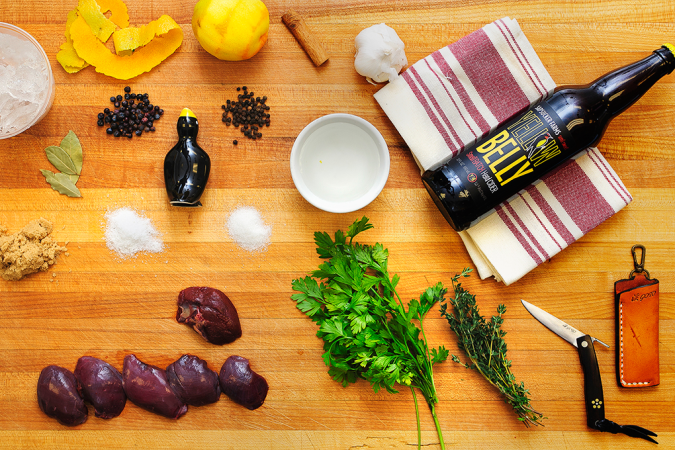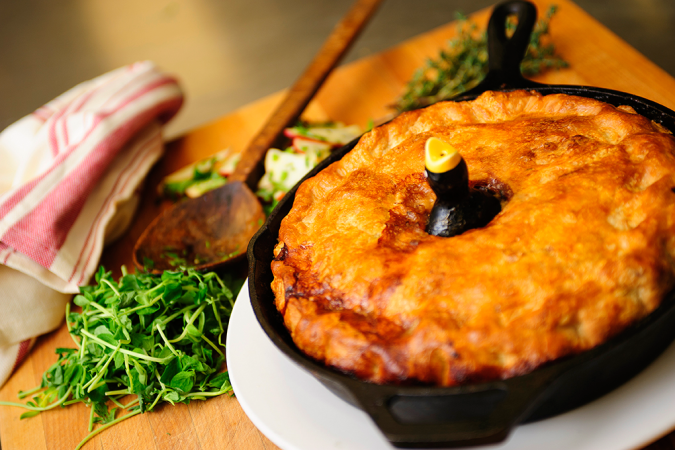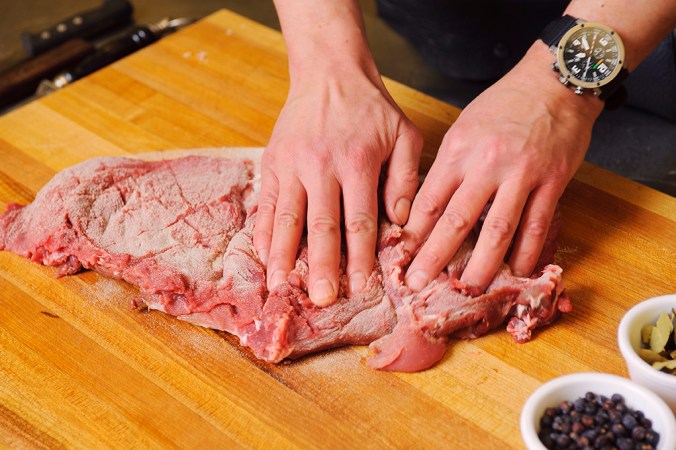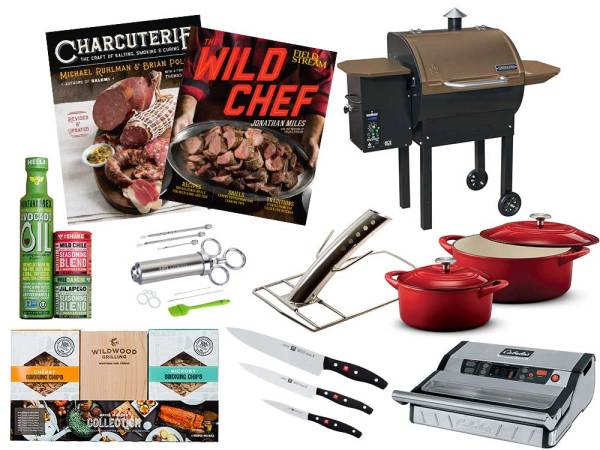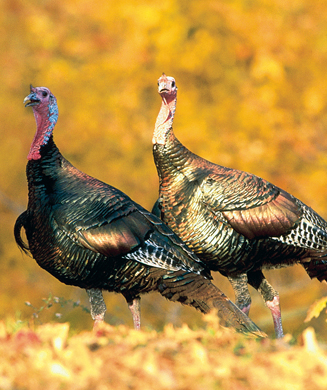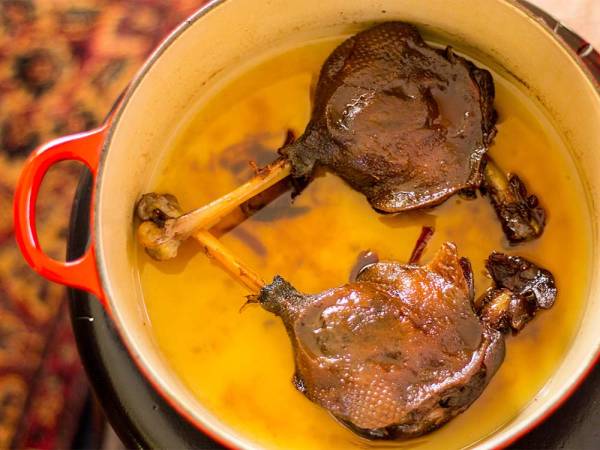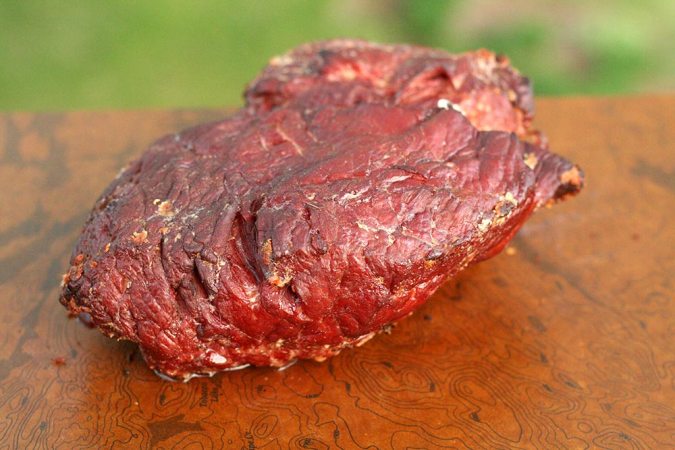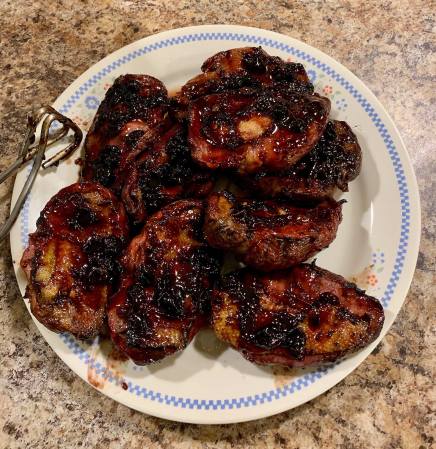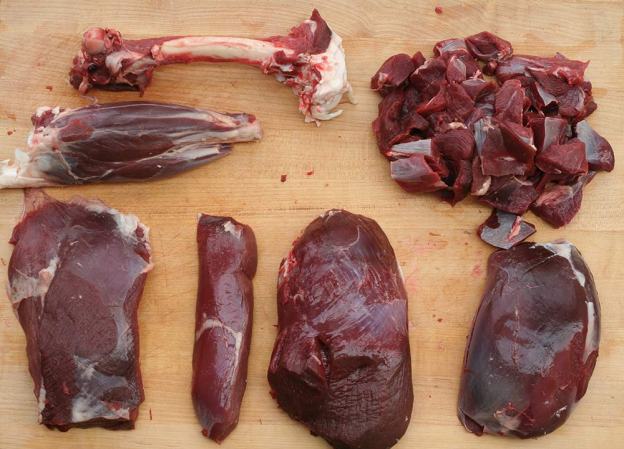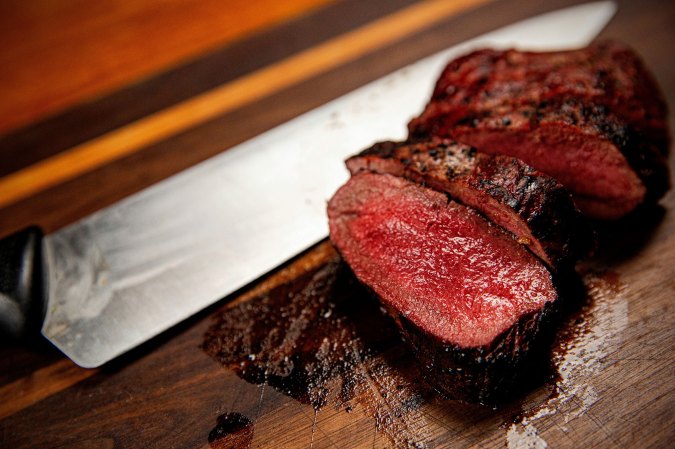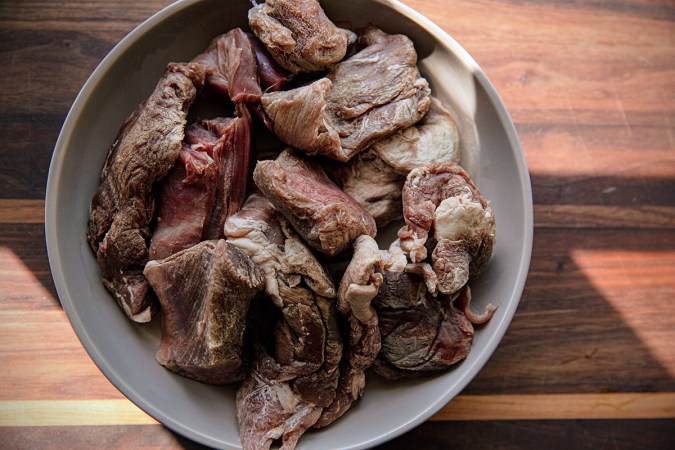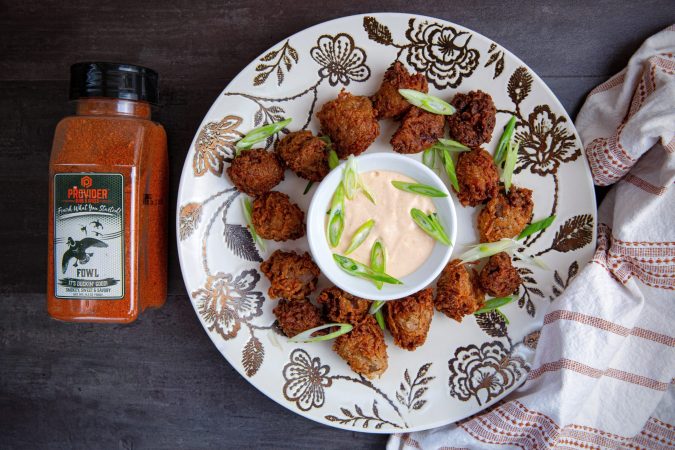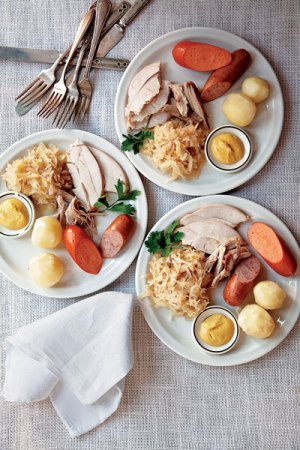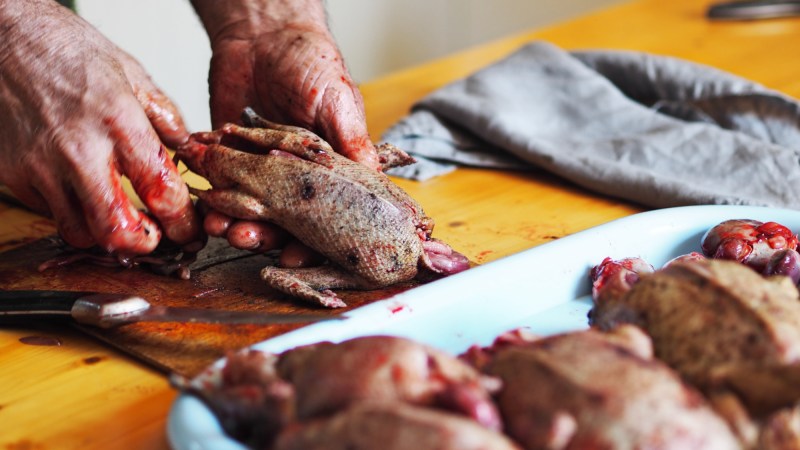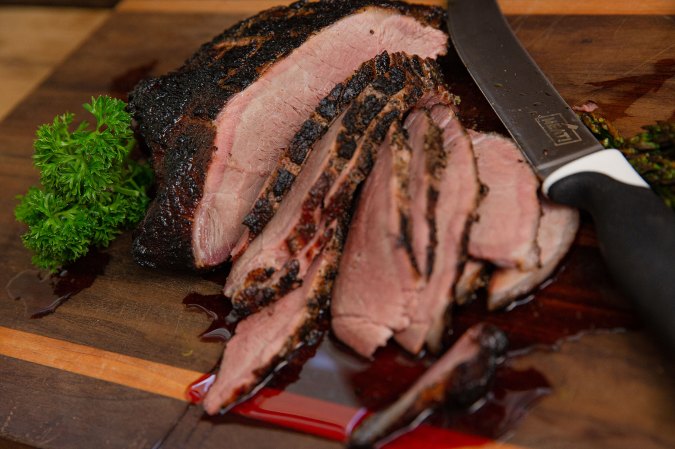1. Juniper berries
Some great pairings defy explanation. Think peanut butter and jelly, macaroni and cheese, beer and pizza, juniper berries and wild game. They are simply classic couplets delightful duos, and pleasant partners.
Botanically, the petit purple berries of juniper trees are female seed cones turned inside-out. Culinarily, they have a slightly piney flavor with a touch of both fruitiness and pepperiness. They look and taste enough like berries to deserve the name. Usually when I am cooking with them, I’ll pop a couple in my mouth and chew. You almost catch a hint of a blueberry there, but then then the pine flavor hits. They can be used whole or crushed. They come to us by way of Northern European cuisine, and are, of course, used in the production of gin.
In addition to culinary uses, herbalists use them medicinally and suggest that they aid in digestion, and function as both antiseptic and diuretic. That makes me wonder if Mother Nature produces them with a medicinal property knowing it’s the perfect herb to protect from potential bacteria present in wild game meat. Funny how nature works that way isn’t it? (Perhaps a good dousing of Bombay Sapphire Gin would achieve a similar result…)
My personal favorites: Penzeys Spices, Wayzata Bay Spice Company
Click here more on the medicinal properties of Juniper
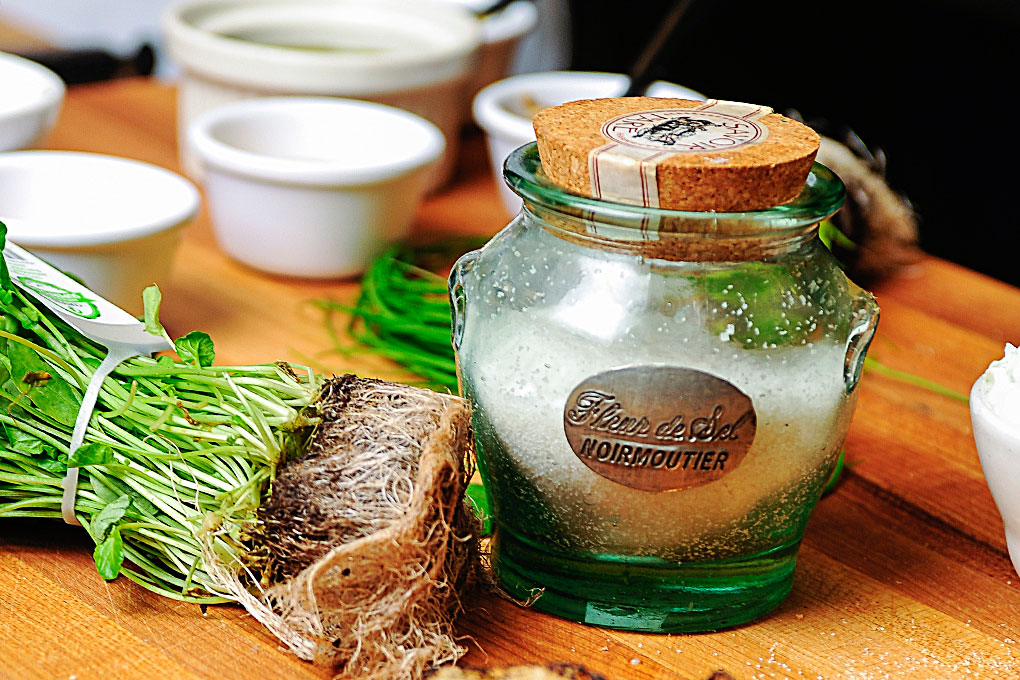
2. Variety of Salts
All edible salts start with sodium chloride, but thankfully for chefs and home cooks, there are different varieties available. The differences manifest themselves mainly in taste, flavor, color, texture, and convenience. What that means for wild game dishes is a variety of options for mouth feel, flavor burst, and taste due to different mineral content, harvest location, and harvesting methods. There are two primary methods of harvesting. First is mining rock salt deposits. Examples would be the salt mines of Berchtesgaden in Germany, or the Khewra Mines in Pakistan famous for producing pink Himalayan formations. The second method is evaporation of water and slurries. This method produces beautiful crunchy, unprocessed salts of a variety of sizes crystal and flake sizes. Below are a few staples in my pantry, but there are many more to explore.
Sea Salt
Salt farmers take a gallon or two of saltwater, strain out any impurities and heat at low temperature until delicate, snowflake-like fleur de sel crystals start to form along the sides. Shortly thereafter, chunky flakes collect at the bottom. The simplicity of the process gives sea salt a terroir (not unlike like wild game from different parts of the country). I use coarse sea salt in a grinder as my everyday table salt.
Kosher Salt
Kosher salt is the workhorse of the kitchen: it’s remarkably versatile. It is made by compacting granular salt collected from mines and deposits. Kosher salt has irregularly shaped flakes that dissolve easily and relatively evenly. Someone recently said, “ If you don’t really care about salt, but don’t want to be ashamed of that blue canister of Morton’s in your cabinet when judge-y friends come over, this is the salt for you.”
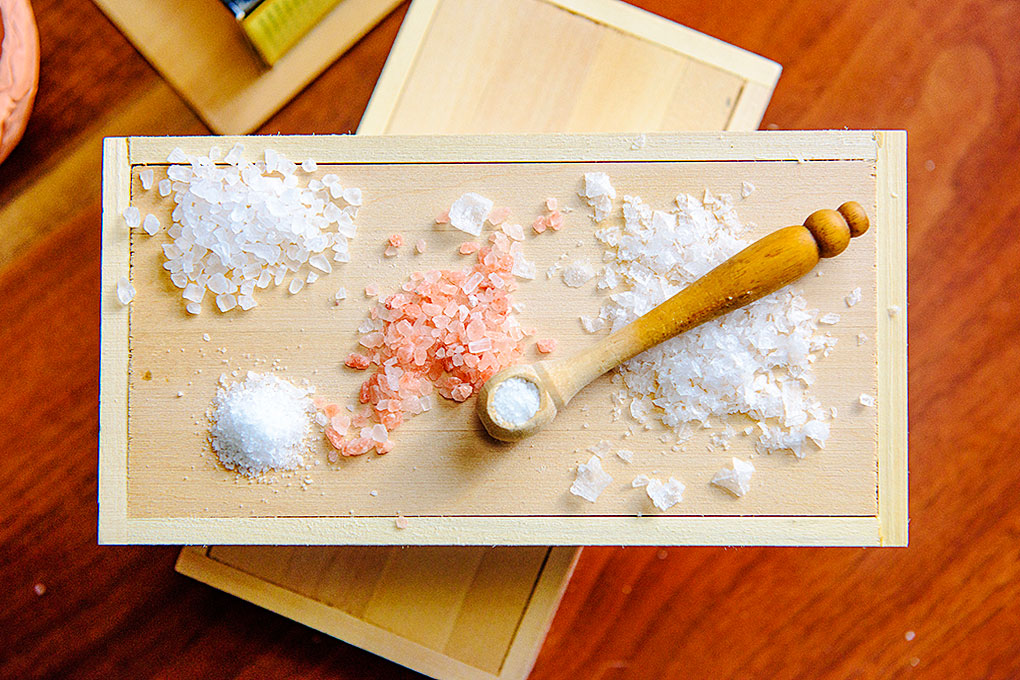
Maldon
Maldon sea salt is made from seawater collected from England ‘s Blackwater river estuary. It’s evaporated in stainless steel saltpans mounted on an intricate system of brick flues, which create the specific heating pattern required for the formation of Maldon’s massive yet parchment-fine flake crystals. Maldon has a crisp snap of intense flavor and a sparkly saltiness. Use it on hor d’oeuvres like venison heart bruschetta, smoked grouse crostini, and elk tenderloin carpaccio. Fleur de sel
Fleur de sel comes by way of France and is a solar evaporated sea, lake, or spring salt with moist, mineral-rich crystals. The process is precise, as the crystals are very fragile. If conditions aren’t quite right, or the salt farmer gets too rough when raking, the salt won’t bloom, or flower. When harvested with care, Fleur de Sel (literally, “flower of salt”) is hailed for its high minerality, incredible moisture content and fine, irregular texture. I use it when plating up fresh catches of fish and delicate game meats.
Himalayan pink
This rock salt was formed from an ocean that dried up hundreds of millions of years ago. Compression transformed the salty deposits into rock, and now pink Himalayan salt is mined in Pakistan. It is hard, has dry crystals with moderate to high mineral content, and virtually no moisture. It is usually ground up mechanically for use as a finishing salt, or left as block or plank for serving delicate foods. When ground it can have an intense and direct impact in the mouth. I use it use it in salt grinders as a replacement for refined table salt.
3. Infused brines
Brining game in a saltwater solution prior to cooking does three things: It 1) imparts flavor by adding aromatics and spices, it 2) tenderizes by breaking down muscle proteins, and, perhaps most importantly, it 3) allows the softened tissue to retain moisture during the cooking process.
Often we get locked into one generic brine recipe that uses salt, brown sugar, and water. And while that’s a good basic brine, I find that it’s easy to boost the delectability of dishes by experimenting with provocative flavor combinations. Next time try starting with a “tea” from a combination of fresh herbs, spices, and sweetener. Place in a small sauce pan with about a cup or two of water. Bring to a boil and then simmer gently for a few minutes. Remove from heat and allow to cool, or just add some ice to bring down the temperature. Then add to the larger salt water base. (Be sure to tear the herbs to release their essential oils before heating.)
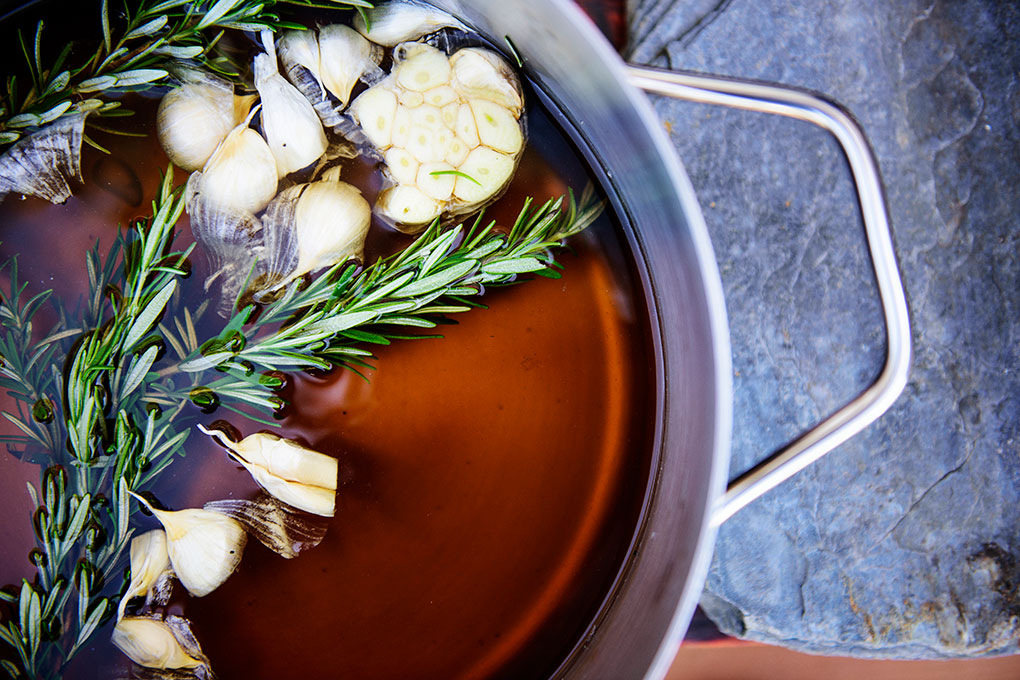
Rule of Thumb Ratio:
1 gallon water
¾-cup salt
1 cup sweetener
Pour 2-2 1/2 cups water into a sauce pan to make the herbal infusion, or “tea” that will flavor the brine.. Add salt, sweetener and aromatics and spices of choice. Heat to a boil and simmer for 5-10 minutes. Remove from heat and pour in to reserved water.
Favorite herbs: Alfalfa, rosemary, thyme, juniper, sage, parsley, bay leaf
Favorite spices: Grains of Paradise, smoked cardamom, Tellicherry peppercorns, cinnamon stick, whole clove, candied ginger
Favorite fruits and vegetables: wild plum, figs, orange peel, persimmon, garlic, onion
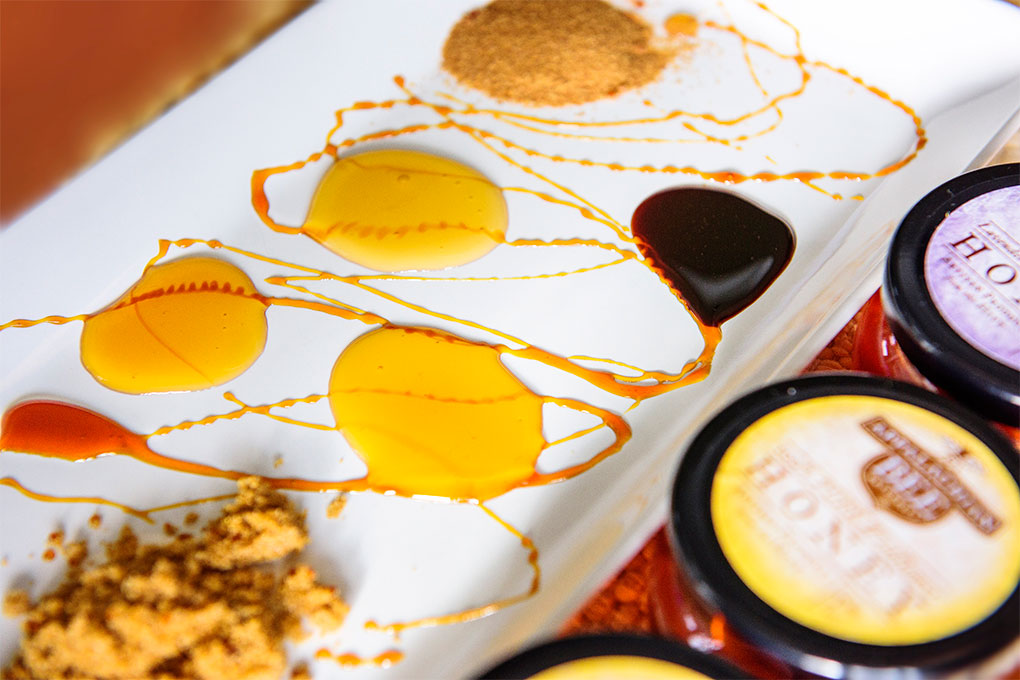
4. Sweeteners
In addition to the obvious role sugar plays in baking, sugars used in the cooking process enhance browning and flavor development. They also add balance to counter the saltiness of brines, and help draw out the blood from the tissue cells. In the case of lighter meats (like boar, turkey, grouse, rabbit, etc.) sugars adds color through caramelization. With so many natural sugar substitutes (like artisan sweetners, honeys, syrups, nectars, to name a few) it’s worth picking up an assortment to vary the flavor, richness, and intensity of your wild game dishes and brines.
Favorites: Infused honeys, sorghum, maple syrup, maple sugar, light molasses, agave nectar, smoked sugar (buy it or make your own)
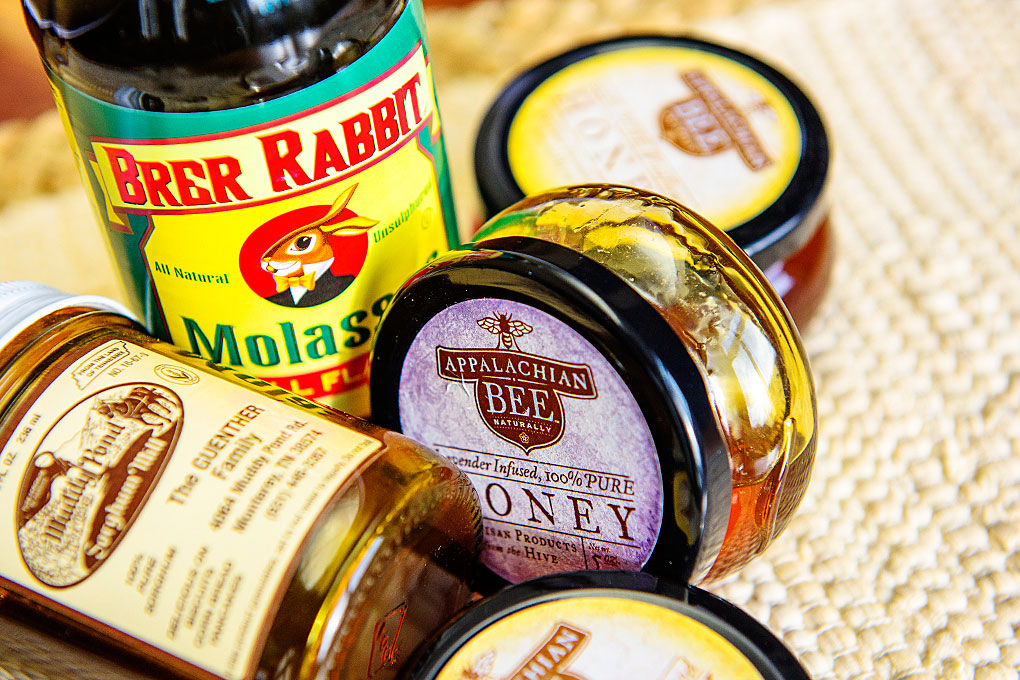
5. Bacon grease
Wild game tends to run lean and low in fat. And for those that don’t like bear, or raccoon, the fat holds intense gamey flavor that we work fastidiously to trim away. So, when searing, or frying, I’ll often use a tablespoon of bacon grease drippings from my refrigerated cache instead of butter or oil. The notion that one should keep bacon fat drippings was instilled in me as a kid while growing up in the micro-economy of a working family farm. If you need to start you own stash, pour the grease from your breakfast bacon into your own special cup, can, or jar. Next time a recipe says to sear your elk steak in oil or butter, throw a dollop of smokey pork fat in the pan to add some depth and smokey goodness.
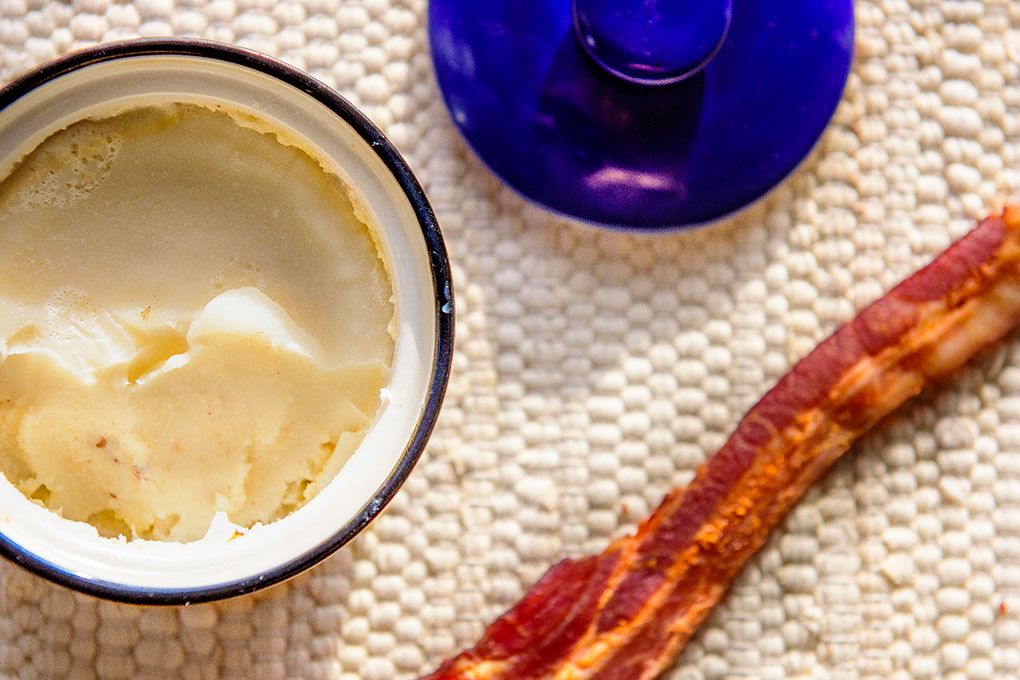
Favorite: While Benton’s is huge in the South, and people up my way like Thielens, or Nueskes, or Nolecheks, the fact of the matter is that many incredible bacons are being crafted in the artisan charcuterie niche. I use all of those listed, and more. But my everyday standby bacon for cooking is streaky Kirkland’s Thick-cut Applewood Smoked bacon. It’s meaty and delicious for quick breakfasts, and for use as an added fat when grinding game into bulk, or link sausage.
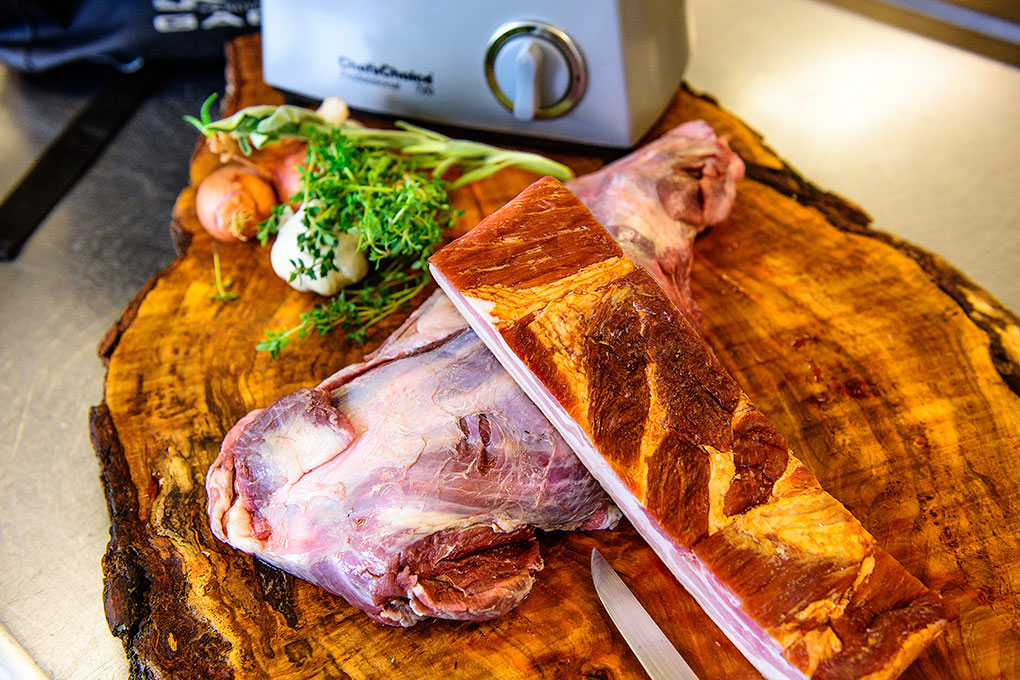
Stay tuned for my roundup of the five kitchen tools I can’t live without.
